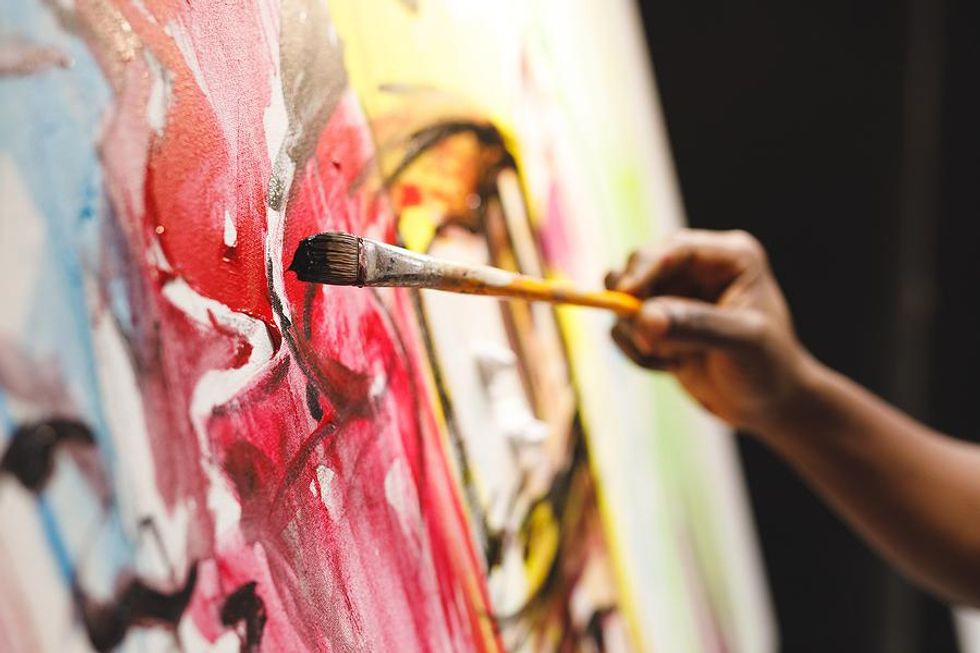
The term "inspiration" is very commonly used. Everyone seems to be inspired by someone or something in their lives. Their inspiration can be a person, event, imaginary character, or even an insight. To cook, write a poem, draw, or take up a job, one needs inspiration. In simple words, inspiration is a creative push from something that resonates deeply with you and your beliefs.
The Causes Of Inspiration

Bigstock
The reasons for inspiration can be strange. Two sons of a drunken man can be inspired by their dad to become an alcoholic or a teetotaler. Inspirations can emerge from one’s mind too. It is a very active process of the mind. A person or an object can inspire someone only if they are mentally active enough to be receptive to that object or person. Thus, in order to be inspired, you need to be receptive and should have an open mind.
Impressions And Inspiration

Bigstock
Sometimes, these two words are used interchangeably, but they are totally two different processes. A person’s mind is like a soft mold and an impression can be easily made, whether or not it is a good one. However, inspiring a mind is like making a rigid object flexible. A person needs to be hyperactive when involved with an object in order for it to inspire them.
How To Find Inspiration

Bigstock
Do some objects come with an inspiration tag? Why do some objects inspire a few people and some do not? Centuries ago, the people who got hit by falling apples did not think the phenomena would be related to gravity. It is almost like seeking a new reality.
When a mind actively searches for inspiration, it will automatically find it. An artist gets the inspiration to draw upon seeing a butterfly because he has been seeking some object that inspires him to draw. Thus, inspiration is a creative process. Once tagged as creative, it means that the inspiration process, methods, and effects of one person will not be the same as that of another. Even the same person may not be inspired in the same way by two different objects.
Inspiration Psychology

Bigstock
To come up with the psychology of inspiration, we need to know what will inspire us, why it inspires us, and why certain objects can inspire certain people and not others. To study the inspiration process, one needs empirical data, but this process is contributed by personal experience, tastes, attitude, personality, and many other factors. Finding inspiration is something you must do yourself, no matter how much information is available about it. That's what makes it more of an art than a science.
The first element of the inspiration process is the purpose. A photographer will be inspired by a butterfly flying over its reflection in a pond to take a picture, but a person who wants to catch some fish may not be stirred by the same bug. What is important to the person looking for inspiration is where their interests intersect with the outside world.
Intuition can guide anyone at any time, but inspiration seeks those who search for it. Sudden enlightenment is the common term used to describe an inspiration process initiation. For instance, a scientist who wants to find an alternative source of energy would get enlightenment from a boiling pot’s rattling lid.
The inspiration process is a little more than just a thought process. It is an interlinked web that connects all the external factors and internal factors to create a solution.
Types Of Inspiration

Bigstock
1. The knowledge-based inspiration process is initiated by knowledge gained or an understanding of a process or an object. For instance, light falls on shattered pieces of glass and creates a visual pattern. An artist would be inspired to draw it, a poet would write about it, and a scientist would have the inspiration to learn why such a visual pattern is produced. Thus the kind and amount of knowledge of the process defines the inspiration.
2. The need-based inspiration process is developed from the needs of the person. An explorer can be inspired by a travel book, but a scientist will not be. So, when the object can satisfy a need of the person, then the probability of that object creating inspiration is much higher.
3. Object-based inspiration can be obtained from personal feelings about an object or subject. A student could be inspired by a teacher to become one because they like the teacher.
4. Internal inspiration can be defined as a thought-based inspiration process. For instance, a scientist looking for a structure of benzene gets their inspiration from a dream of a snake biting its own tail. A person gets inspired if an object or a scene can be related to the topic in their thought process.
In short, inspiration is about what our mind wants to see and what the eyes actually see. If the mind can correlate both, then inspiration is more likely to happen.
Need more inspiration in your career?
Become a member to learn how to UNLEASH your true potential to get what you want from work!
- 21 Inspirational Career Quotes For Professionals - Work It Daily ›
- 10 Career Quotes That Will Inspire Any Recent College Grad - Work ... ›
- 7 Inspirational Career Change Quotes - Work It Daily ›

 Bigstock
Bigstock Bigstock
Bigstock Bigstock
Bigstock


